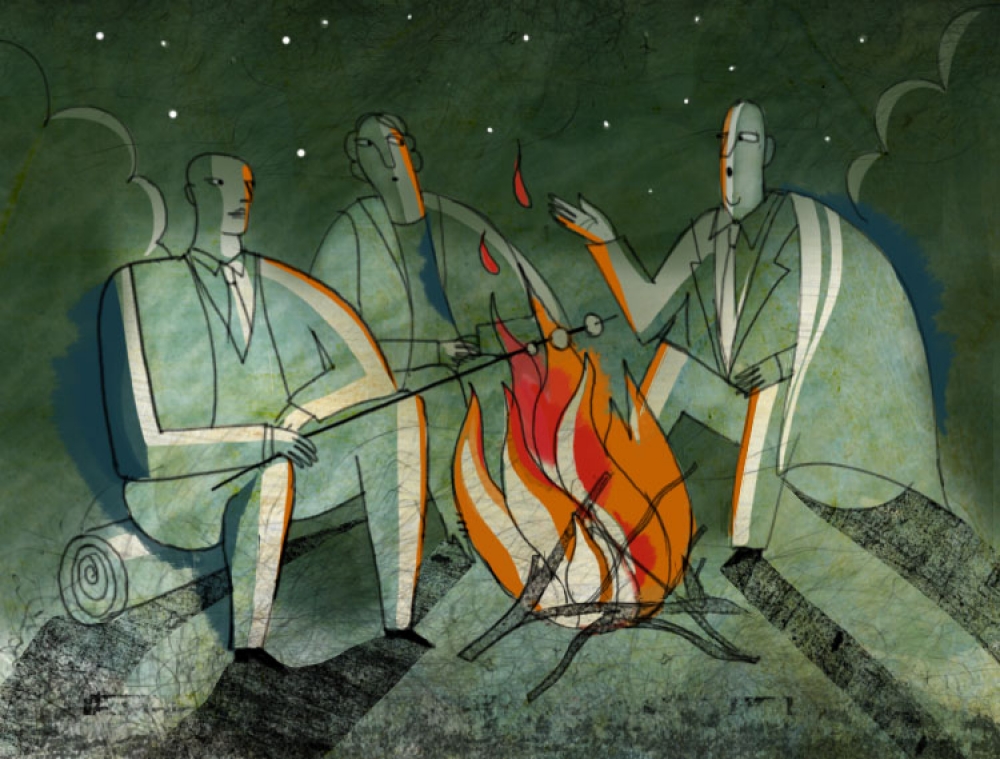I wish DODs, VPs of Advancement, CEOs and Executive Directors had the courage and the money to hire a Manager of Stories as a full-time position in their organization.
You might be laughing as you read this. “A Manager of Stories, Richard? Really?!?” you might say.
Yes, a Manager of Stories.
Here’s why.
First, a story is the life-blood of fundraising. It carries all the energy and real-life experience – it’s the feeder for all the senses, the carrier of all the emotions, and the dispenser of facts and information. The story is the next best thing to actually being there.
That’s the role of the story in major gifts – to take the donor to the scene.
Many non-profits spend a ton of money doing vision trips and organizing tours and program visits – all of which is very very good, and needed. But think about what more they could do if the MGO could share a new story every week with each donor.
It would be a story that grabbed donors’ hearts about a problem; a story that filled them up with joy about a life turned around, a lake saved, an injustice corrected; a story that, while they read it, caused such a rush of emotion that the donor felt compelled to stand up and shout in anger or scream with sheer joy.
We need a steady stream of these in major gifts. Stories. Stories that take us there where the pain and the problem is. Stories that show us that there is still hope – that things can change. Stories that bring us wonder about how the hurts of the planet can be redeemed, and wholeness and beauty can be restored. This is what we need.
If you don’t have a story-collecting system in place in your organization, then you or your administrative assistant should task yourselves regularly to collect them. Here is what I suggest you do:
- Make a list of the passions and interests of each of the donors on your caseload. Then make sure you are looking for stories that are both problem- and solution-oriented for each passion and interest on your list.
- Visit program sites and talk to the recipients of your program. Ask them for “before and after” stories to illustrate the problem and the solution. Get into the details and how the person felt. Do not be afraid of emotion. Keep digging until YOU feel it.
- Ask your program person to feed you stories regularly.
- Organize a story collection day every month where your whole department gets together to share stories they have collected.
- Google your cause to secure generic stories about the problem your organization is dedicated to solving.
- Turn everyone you know in your organization into story collectors.
- Ask others how they collect stories, and copy their methods.
- Go to a storytelling conference, or read about how to collect stories. If you’re not attending it already, Jeff and I recommend the Story Telling Conference, which is next week in Chicago. There is still room; but if you can’t go, get the videos. It is one of the best gatherings of the creative storytelling “brain trust” in the world. And the whole purpose of the conference is storytelling. There is nothing like it.
Stories. They are so important. And collectively, we do not do a good job of securing them. Set your mind today to find a way to collect stories. And be sure you pass them on to each donor on your caseload.
Richard







That isn’t my title, but it aptly describes my job. As the Assistant Vice President for Development Communications at UAB, I lead a creative team whose charge is exactly that: Find and tell stories about the power of philanthropy to change lives on this campus and in this community. I spent 15-plus years as a front-line fundraiser here at UAB, and then moved into this role 18 months ago to manage messaging about our $1B campaign. Fortunately, I was given the resources to expand the team to include a creative director, a web dude and a photographer/videographer, plus a writer and me (also a writer). And most important, I was given the freedom to blow things up — to change the way we had been telling our story, which had always felt to me like we were just reporting transactions, i.e. “Joe Schmoe has made a gift.” Now, through our own channels (print, web, email, social), we tell stories about why Joe Schmoe was moved to make his gift, and about the impact Joe’s gift has had/is having/will have on students/faculty/patients/etc. The size of the gift is rarely part of the story anymore, which has liberated us to tell the best stories regardless of dollar amount. And we’ve dug through the files and found gifts made in our last campaign and even earlier, and then traced the impact of those gifts over time and written those stories, too. We work with our MGOs to develop stories that speak directly to the prospects in their portfolios, and we believe (as does our leadership) that we are helping to move the needle toward that $1B. In fact, we had our biggest year in institutional history in FY16. So I think we’ll now start calling ourselves the “Office of Stories.” Thanks for your post!
Yes! Yes! The “Office of Stories”! Do it. So encouraging. And proof that good story telling adds economic value. Thank you, Virginia’